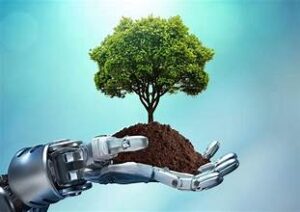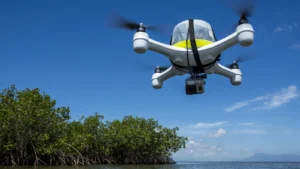
Forests are essential to the health of our planet, providing critical ecosystems for wildlife, combating climate change, and supporting human livelihoods. However, deforestation and forest degradation threaten these vital resources. To address these challenges, innovative forest conservation strategies that leverage technology are emerging as powerful tools for sustainable solutions. This article explores how cutting-edge technologies are revolutionizing forest conservation efforts and paving the way for a greener future.
1. Remote Sensing and Satellite Imagery
Remote sensing technology and satellite imagery have become indispensable in modern forest conservation. These technologies allow scientists and conservationists to monitor forest cover, detect illegal logging activities, and assess forest health from space. High-resolution satellite images provide detailed insights into changes in forest ecosystems, enabling timely interventions.
Benefits:
- Early Detection: Satellite imagery can quickly identify deforestation and forest degradation.
- Comprehensive Monitoring: Remote sensing offers a broad view of forest areas, including inaccessible regions.
- Data-Driven Decisions: Accurate data supports effective management and conservation strategies.
2. Drones for Forest Monitoring
Drones are revolutionizing forest monitoring by providing real-time data and high-resolution images from the air. They are used for various purposes, including surveying forest areas, mapping vegetation, and assessing damage from natural disasters. Drones can access hard-to-reach areas and deliver valuable information with greater precision.
Benefits:
- Cost-Effective: Drones offer a more affordable alternative to traditional aerial surveys.
- Real-Time Data: They provide up-to-date information on forest conditions.
- Versatility: Drones can be equipped with various sensors for different monitoring needs.
3. Geographic Information Systems (GIS)
Geographic Information Systems (GIS) are powerful tools for analyzing and visualizing spatial data related to forests. GIS integrates various data layers, such as topography, vegetation types, and land use patterns, to support decision-making in forest management. It helps in mapping forest resources, planning conservation strategies, and evaluating the impact of interventions.
Benefits:
- Spatial Analysis: GIS allows for detailed analysis of forest data.
- Informed Planning: It aids in the development of effective conservation plans.
- Impact Assessment: GIS helps assess the impact of conservation efforts and policy changes.
4. Artificial Intelligence (AI) and Machine Learning
Artificial Intelligence (AI) and Machine Learning (ML) are transforming forest conservation by automating data analysis and improving predictive capabilities. AI algorithms can process vast amounts of data from various sources, such as satellite images and sensor networks, to identify patterns and predict forest changes.
Benefits:
- Predictive Analytics: AI can forecast potential threats to forests and optimize conservation efforts.
- Automation: Machine learning algorithms streamline data processing and analysis.
- Enhanced Accuracy: AI improves the accuracy of forest monitoring and management.
5. Blockchain for Transparent Supply Chains
Blockchain technology is being explored to ensure transparency and traceability in the forest product supply chain. By creating an immutable ledger of transactions, blockchain can track the origin of forest products and verify that they are sourced sustainably. This technology helps combat illegal logging and promotes responsible sourcing practices.
Benefits:
- Transparency: Blockchain provides a transparent record of forest product transactions.
- Anti-Fraud: It reduces the risk of fraud and illegal activities in the supply chain.
- Consumer Trust: Blockchain enhances consumer confidence in sustainable products.
6. Internet of Things (IoT) in Forest Management
The Internet of Things (IoT) involves connecting various devices and sensors to collect and exchange data. In forest management, IoT devices can monitor environmental conditions, track wildlife, and detect changes in forest health. This real-time data enables proactive management and rapid response to emerging issues.
Benefits:
- Real-Time Monitoring: IoT devices provide continuous updates on forest conditions.
- Early Warning Systems: They can detect signs of forest fires, pests, or diseases early.
- Efficient Management: IoT enhances the efficiency of forest management practices.
7. Citizen Science and Crowdsourcing
Citizen science and crowdsourcing involve engaging the public in data collection and conservation efforts. Apps and platforms allow individuals to report observations, share data, and contribute to forest conservation projects. This approach harnesses the collective knowledge and enthusiasm of the community to support conservation goals.
Benefits:
- Increased Participation: Citizen science engages a broader audience in conservation efforts.
- Diverse Data Sources: Crowdsourcing provides data from various locations and perspectives.
- Public Awareness: It raises awareness about forest conservation issues and promotes community involvement.
Conclusion
Innovative technologies are transforming forest conservation strategies, offering new tools and approaches to protect and manage our planet’s vital resources. By leveraging remote sensing, drones, GIS, AI, blockchain, IoT, and citizen science, we can enhance our efforts to preserve forests and ensure their sustainability for future generations. Embracing these technological advancements is crucial for addressing the complex challenges of forest conservation and achieving a more sustainable future.


